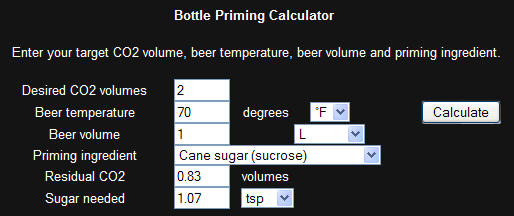I had a quick question as when I researched I was getting a few different answers. When calculating (Using tasty brew calc) it ask what the temp of the beer is. I have heard that you input the highest temp the beer has reached when it was in the primary (which I believe is the way to go), also heard that you input the temp the bottles will be stored at, and lastly what the temp of the beer is before bottling.
Thanks for your help guys.
Thanks for your help guys.



